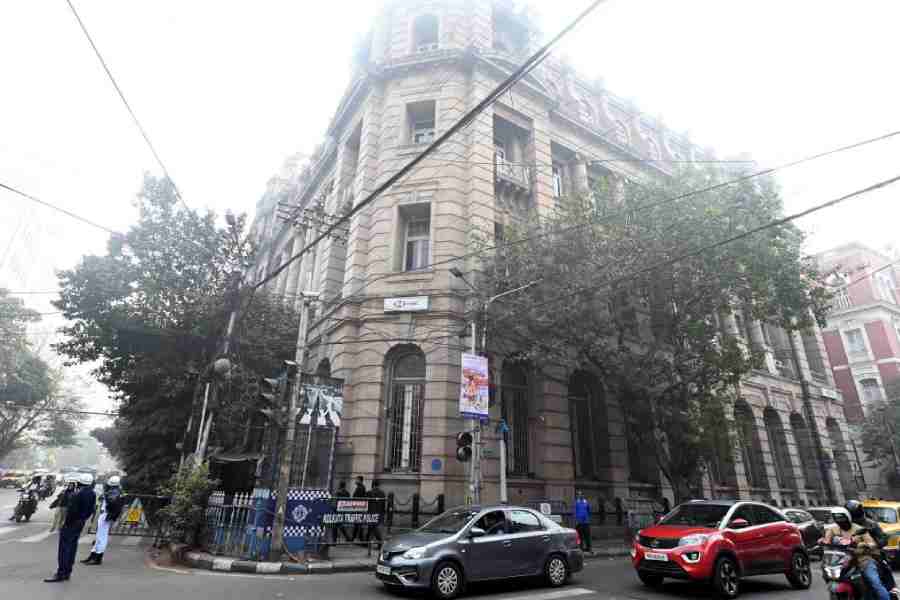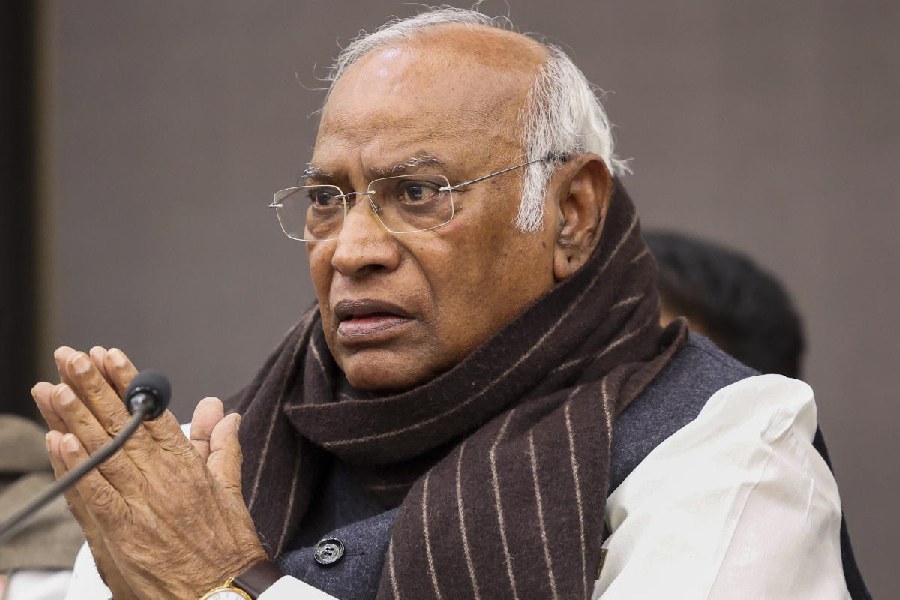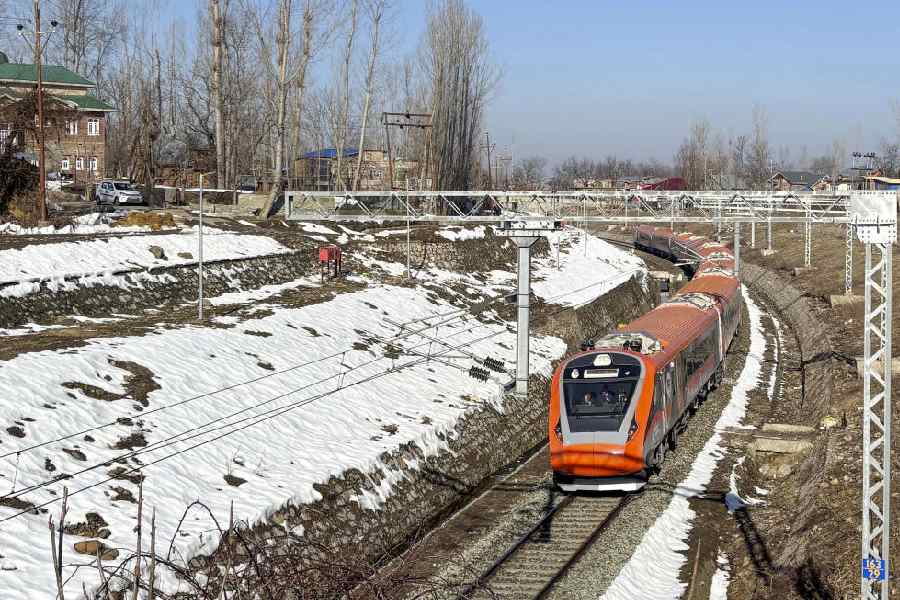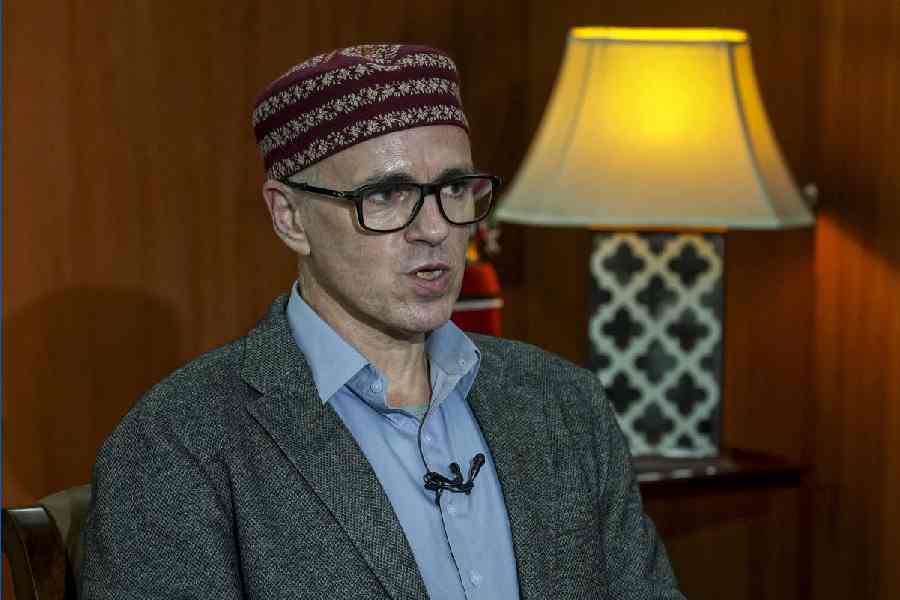The imposing Hongkong House at BBD Bag, a telling image of a Calcutta that was, celebrated its 100 years on Friday.
HSBC India, which has its oldest branch in the four-storey building, has unveiled a “history wall” featuring images with short captions that outline various milestones in the bank’s trajectory through the city and the country.
The occasion turned the spotlight on an era when Calcutta was India’s financial powerhouse.
Hongkong House, located south of what is now known as Lal Dighi, opened for business in 1924. It was for decades the bank’s India headquarters. But like so many other symbols of wealth, power and prestige, the bank’s headquarters later moved out of the city, to Bombay.
A century ago, BBD Bag — then Dalhousie Square — had nine banks, many of them international institutions, running from its neighbourhood. Not far from Hongkong House stood, on Strand Road, what used to be the Imperial Bank of India.
“The Imperial Bank was set up in 1921 amalgamating the three Presidency banks of Calcutta, Bombay and Madras. The Imperial Bank became the State Bank of India in 1955,” said conservation architect Manish Chakraborti.
“The old building on Strand Road was pulled down in the 1980s and a new building came up in its place.”
However, by the time Hongkong House had appeared on the scene, Calcutta’s pre-eminence had already begun to erode with the Raj having shifted its administrative capital to Delhi in 1911.
Over the years, top corporate houses took their headquarters out of the city, particularly after Independence. The reasons were many, the foremost being a violent extreme-Left movement, militant trade unionism, and a stop-work culture.
Sandeep Batra, head of international wealth and premium banking at HSBC India, who was in Calcutta for the centenary event, said: “The construction of the building started in 1915. It took eight years to complete. Operations from this building began in 1924.”
Today, the BBD Bag branch is HSBC India’s oldest branch, 25 years older than the bank’s current headquarters in Mumbai. The bank’s only other branch in Calcutta now is at Gariahat.
The Hongkong House branch was not HSBC’s first branch in Calcutta, though.
The first branch of the Hongkong and Shanghai Banking Corporation in India opened in Calcutta in 1867. Its address is not documented, but it stood somewhere to the east of Hongkong House, an official said after digging into the HSBC archives.
“Silver coin and bullion was in high demand across India and HSBC became a leading player in the market over the coming (sic) decades,” says a document shared by the company.
Hongkong House – 31 BBD Bag -- is listed as a Grade-I building in the Graded List of Heritage Buildings published by the Kolkata Municipal Corporation in 2009.
“It is a sandstone structure, a Georgian architecture building. This classical style was imported from England. The British set up such buildings to promote its architectural styles in its colonies,” Chakraborti, the conservation architect, said.
Pre-1911 Calcutta was both the administrative and financial capital of the subcontinent, Chakraborti said.
“After the administrative capital was shifted in 1911, many companies too began to shift to Bombay, which subsequently became the financial headquarters of India,” he said.
The growth of the European banks in Calcutta was helped by the opium trade conducted by the East India Company from India.
Bengal was a major opium producer, said historian Suranjan Das, former vice-chancellor of Calcutta University and Jadavpur University.
“The balance of trade between China and Europe was against Europe. To offset this, the English exported opium to China and the profit from this was used to buy Chinese tea and other Chinese goods for the European market,” Das said.
“The profits earned through this trade were a contributing factor to the growth of the European banks in Calcutta in the late 18th century and early 19th century.”
On Friday, the bank organised a “Dalhousie Walk” for its senior officials and some customers. Iftekhar Ahasan, who led the Walk, enlightened the guests about the neighbourhood’s heritage.
“I showed them the statue of the Maharaja of Darbhanga right across the street from Hongkong House. I also showed them the GPO, Writers’ Buildings and Stephen House,” said Iftekhar, founder of Calcutta Walks, a walking tour company.
“I told them about Arathoon Stephen, an Armenian from Iran’s Julpha who came to Calcutta and built a business empire that included the Grand Hotel, Stephen House at Dalhousie Square and Stephen Court on Park Street.”
Subhra Ray, 67, who worked for HSBC between May 1982 and October 2014, said there were nine HSBC branches in the city even in the 1990s. “I worked in eight of these,” she said.










